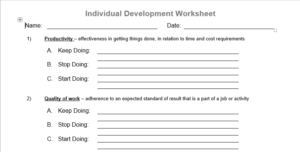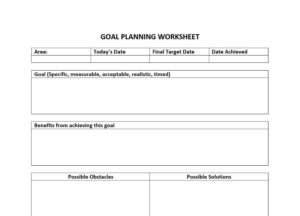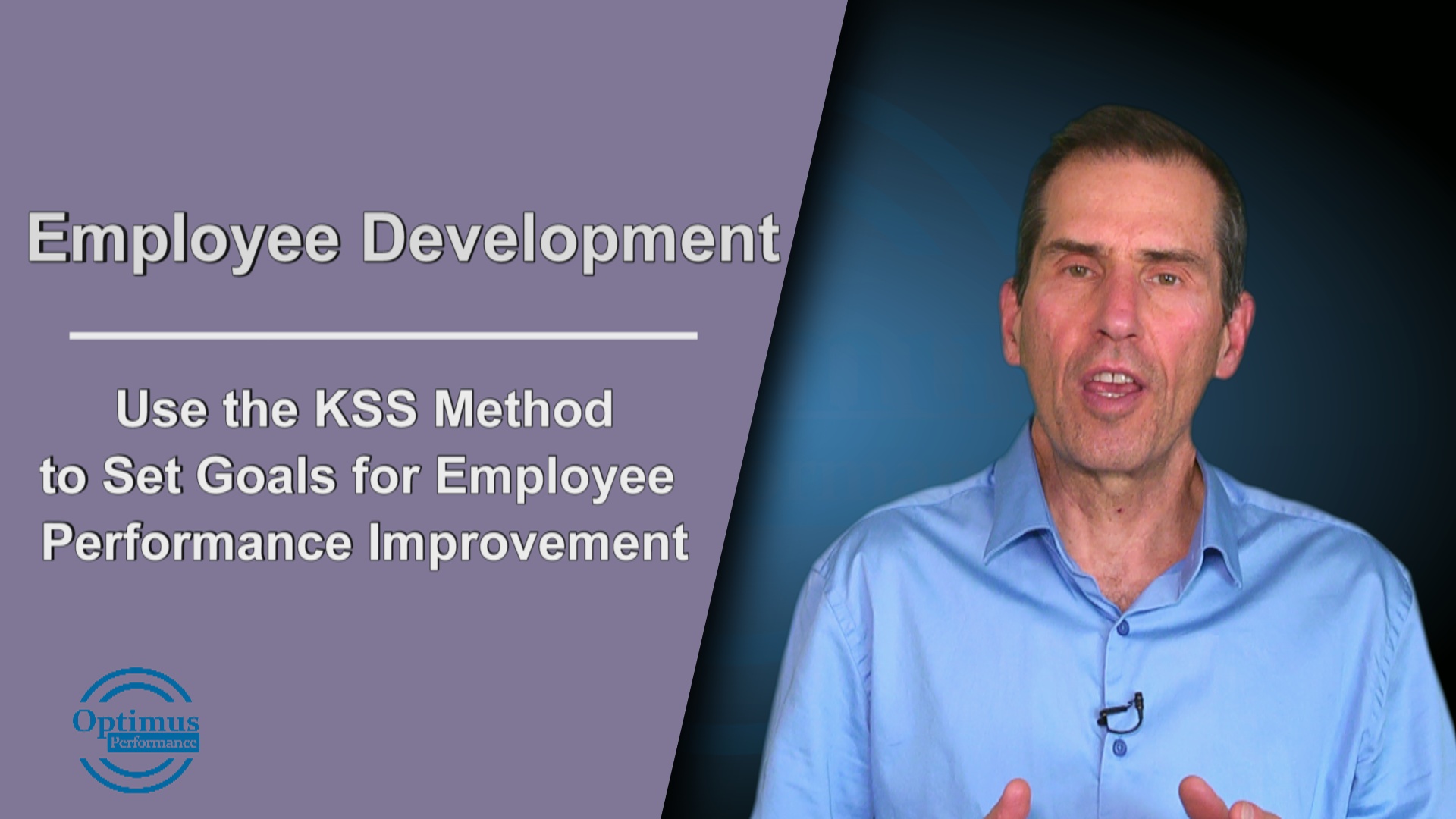Setting Personal Development Goals Within an Employee using the KSS method
Setting personal development goals with employees is essential to ensure continued improvement in performance and productivity.
The best time to do this is when conducting an employee performance evaluation. In my recent videos and articles, I covered how to conduct an employee performance evaluation and provided five core competencies that every employer could use to discuss and evaluate performance. I also provided forms that can be downloaded and used during an employee performance evaluation.
The KSS method to set employee performance improvement goals is a highly effective method to pinpoint both positive performance and areas that need improvement. I am also making available the individual development worksheet to make this process easy.
The KSS method is simple. The K stands for keep doing, the S stands for stop doing and the other S stands for start doing. By using this approach, you are recognizing what the employee does well, what they should no longer do and what they need to begin doing.
 The KSS Individual Development Worksheet uses the five core behavioural competencies that I covered in my last article. These are productivity, quality of work, initiative, teamwork and problem-solving.
The KSS Individual Development Worksheet uses the five core behavioural competencies that I covered in my last article. These are productivity, quality of work, initiative, teamwork and problem-solving.
Each employee will have different strengths and weaknesses for each of these competencies. The key is to take the time to sit down with the employee and discuss their performance by referring to personal observations as well as tangible work situations from the past.
This method can be applied whether you are using the five competencies I mentioned or the evaluation criteria that you currently are using.
I have taken this worksheet from our behavioural assessment, the Profiles Performance Indicator. Once the employee completes the assessment, the individual development worksheet is used to discuss the feedback from the report and then fill out the worksheet based on a discussion with the employee.
For example, an employee who is highly productive may not always produce quality work because they may tend to rush things to get onto the next task or project. They may be motivated by getting things done. Obviously, you would want them to keep being productive but perhaps pay more attention to detail especially when it’s pertains to the most important tasks relative to the job.
 When completing the worksheet, focus on one or two items for the employee to work on. These items can be turned into a goal that is smart, specific, measurable, achievable, realistic and timed. You can download my goal planning form to aid in setting a goal.
When completing the worksheet, focus on one or two items for the employee to work on. These items can be turned into a goal that is smart, specific, measurable, achievable, realistic and timed. You can download my goal planning form to aid in setting a goal.
Set a target date for the goal and meet the employee after 30 days to track progress. These types of goals require a change in habits and can be difficult to achieve. After 30 days, you might find specific obstacles that could be holding the employee back from making progress. You want to discuss solutions and these will become new actions for the employee.
Continue to follow-up every 30 days on the progress the employee is making and you will see an improvement in performance and productivity.
You can also do this for yourself as a leader or manager to become more effective and act as an example to your employees.
